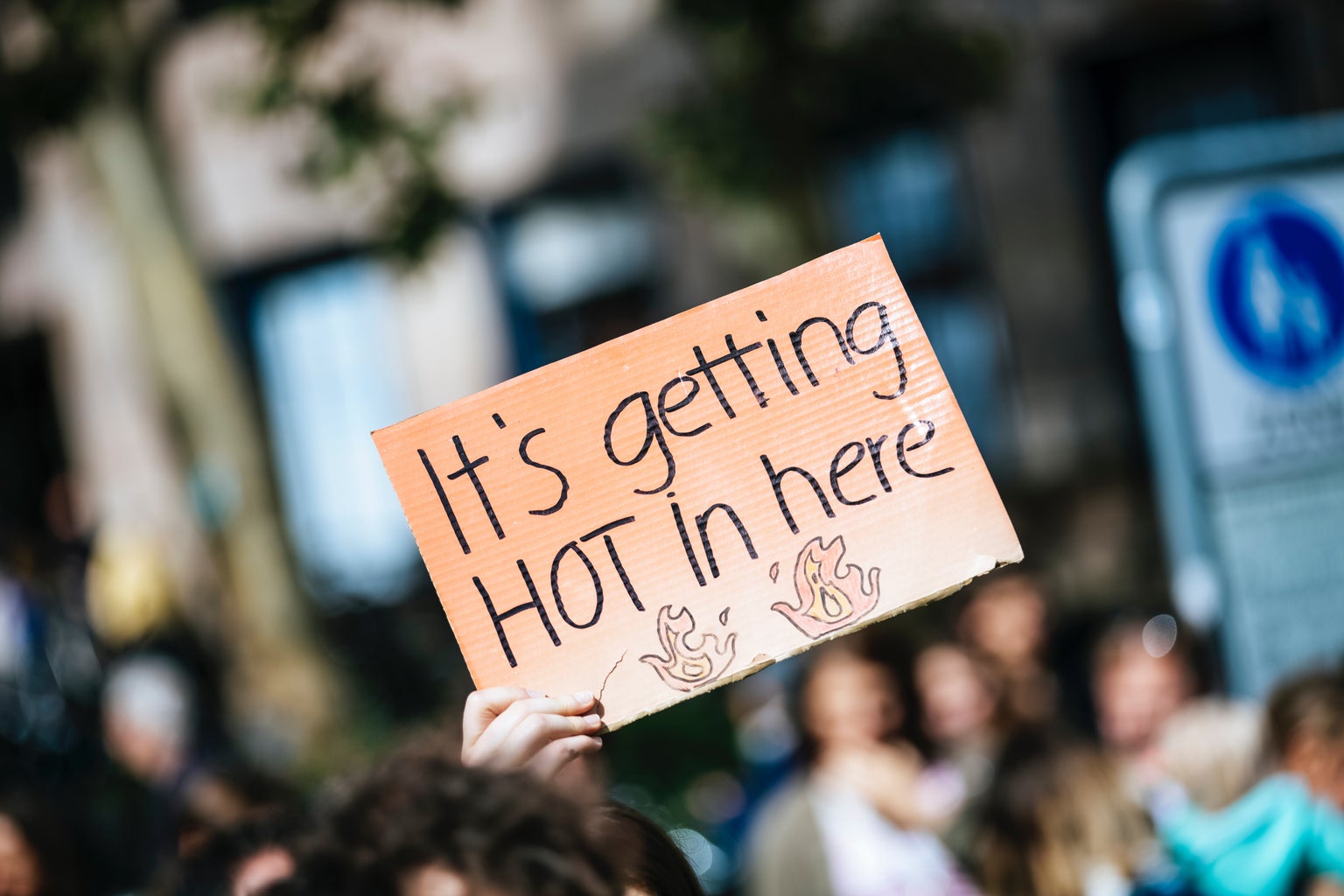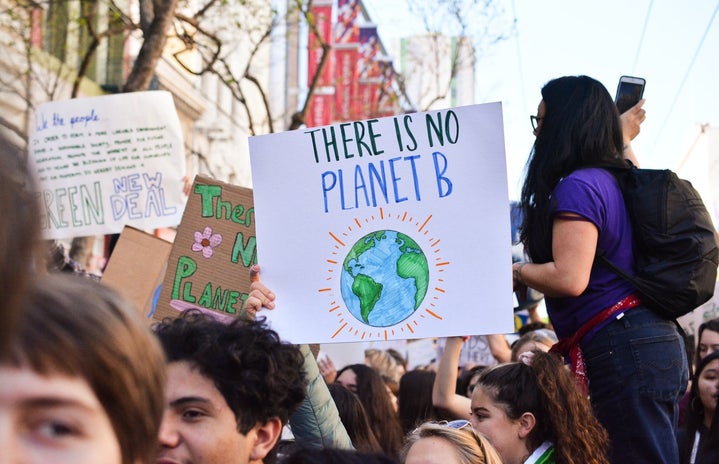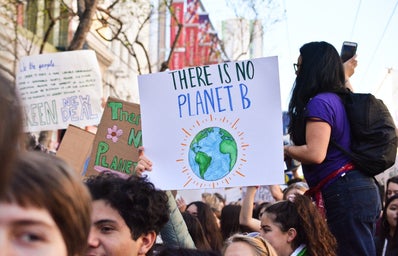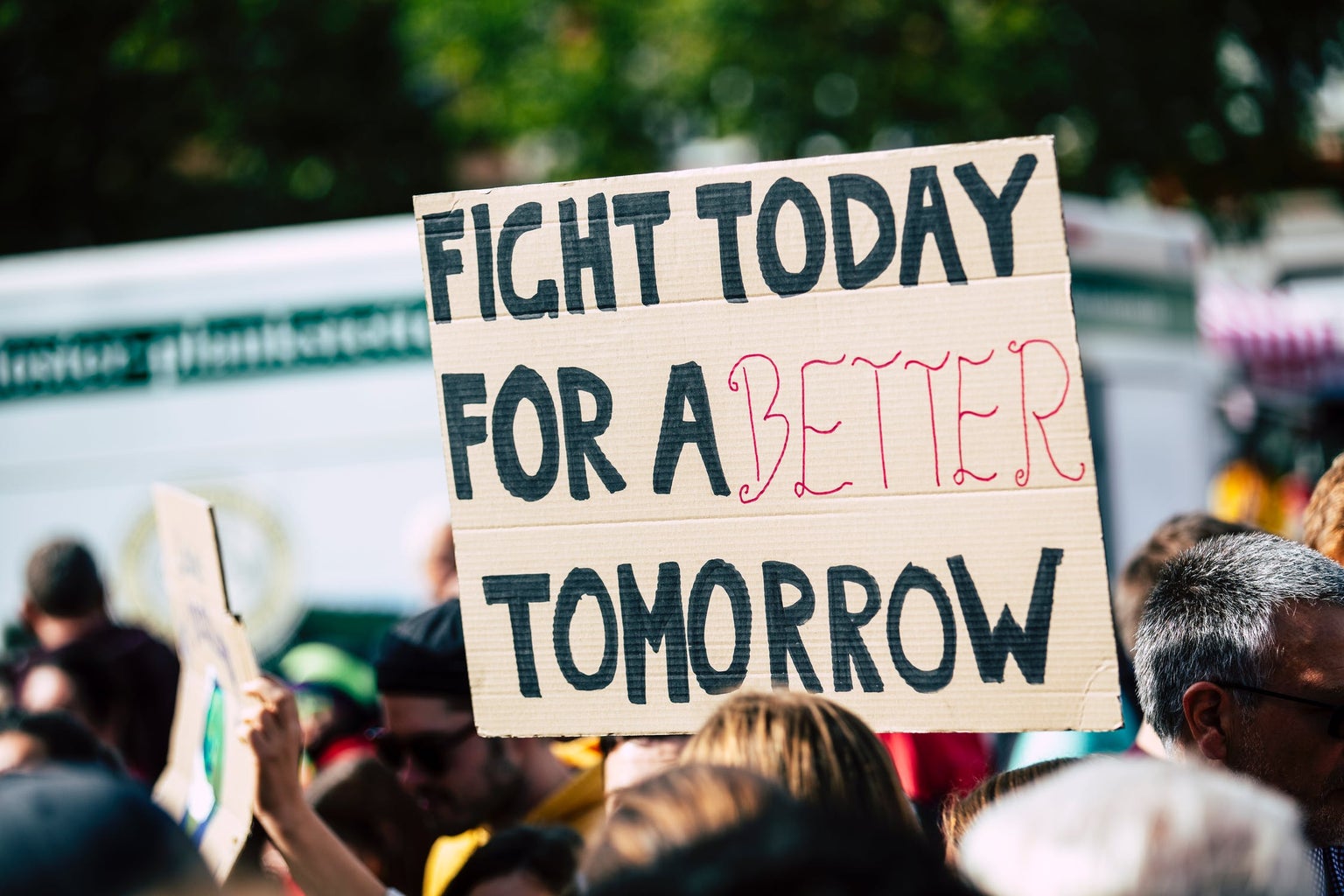Have you ever heard of ecofeminism? It’s not a widely spread term, but it’s increasingly important to understand it in our society. It has been more and more employed to recognize the ways gender inequality intersects humanity’s relationship with the environment. The movement may hold the key to perceiving how elevating women can help achieve equitable sustainability as well as reduce pollution.
According to Vanessa Lemgruber, author of the book “Guia Ecofeminista: Mulheres, Direito, Ecologia” (Ecofeminist Guide: Women, Rights, Ecology) and owner of an Instagram page about this subject, Ecofeminism is a part of the feminist movement that connects the fight for equal rights and opportunities between men and women with the defense of the environment and its preservation. It seeks a balance between human beings and nature, fostering collaboration instead of domination, and respecting all forms of life.
“India Climate Dialogue” points out that women are 14 times more likely to die from a climate-related disaster than men, and suffer disproportionately from resource depletion and consequential poverty. Even though most people don’t make this connection, these impacts are highly related to the patriarchy, which limits opportunities for women. The lack of access to education and female participation in politics can make the problem worse.
“The movement identifies that the patriarchal structure prioritizes the values of conquering dominance, of both bodies and territories, which is harmful to the environment in general, affecting women and animals of different species”, states the specialist.
But why is the term “ecofeminism” so important after all? Understanding the link between gender equality and environmental issues is not only prime because of the gendered impact of climate change, but also because potential environmental solutions can emerge by elevating women — either by education or by giving them the rights they deserve.
Understanding in practice
According to the United Nations (UN), women represent 80% of the total number of people who are forced to leave their homes and take refuge elsewhere as a result of climate change. This is because women are more likely to live in conditions of poverty and less socioeconomic power, which ultimately makes it more difficult to recover from extreme situations such as natural disasters.
Although they are the most affected, ironically, women are the least responsible for the devastation of the environment. A report released by the United Nations Population Fund shows that the poorest women in the least developed countries are the main ones affected by the climate and, at the same time, are the ones that least contribute to global warming. Precisely because they earn less, women, in general, have a lesser role in contaminating and destroying ecosystems.
Vanessa, who is also a lawyer, gives us an example of how this can be seen in real life and you don’t even think about it: “Some research has linked cases of domestic violence to animal mistreatment. They show that when there are cases of non-human animal abuse, they are usually accompanied by domestic violence against women. Some legal sectors have already followed cases like this. If, for example, it is found that the dog or cat is mistreated or some other non-human animal that lives in that residence, an alert is already triggered, because, depending on who is the cause and depending on that family structure, it is possible that we can also observe domestic violence against women or even against children”.
Another example is the females in the animal universe. Females are exploited for reproductive purposes, and that’s basically what happens in patriarchy too. Ecofeminism aims to empathize with all species.
“Cows and chickens, for example, are exploited because of the potential to generate life and to give pleasure, putting food on people’s plates. Even female dogs have to produce puppies to be sold. Ecofeminism draws attention to this matter and says that just as humans, other species can also suffer”, completes the specialist.
Education’s role
Cultural, economic, and health factors currently impede too many girls from attending school. The UN estimates that women make up more than two-thirds of the world’s illiterate population. Only 39% of girls in countrified areas attend secondary education, compared to 45% of the boys.
Improving literacy rates for women is an important benefit. The Project Drawdown shows that increasing job opportunities can give women more agency to decide what to do in their lives, and are less likely to be forced into marriage or have children. Additionally, as literacy rates among women rise, income level, nutrition, and child survival rates also tend to expand.
For that reason, we need policies to turn schools into safer places for young women, as well as offer education at affordable prices and grant easier access to healthcare and contraceptives for girls. These attitudes can empower and uplift women to make their own career and life decisions and help the environment by reducing the birth rate — which can be a problem to the climate if elevated.
On the other hand, any social initiative addressing the roles of women mustn’t act as a form of forceful population control, such as a one-child policy, which can lead to unintended and severe social consequences.
In addition, improving women’s access to education can have a strong impact on sustainable resource management in economies that rely on agriculture. In many countries, women are responsible for the control of natural resources, including water, fuel sources, and food. The “International Journal of Research”, a study of communities in the Western Himalayas, showed that females tend to handle the conservation and administration of critical natural capital, including forests, wetlands, wildlife, and agricultural fields to supply basic needs for their families.
Menstrual poverty
A menstruating person needs, among other things, to change the pad several times a day, but the lack of access to this basic hygiene item is a serious public health problem that little you hear about, unlike other collective issues. This can be another example of how ecofeminism works, according to Vanessa Lemgruber.
Have you ever heard someone publicly advising about poor menstrual hygiene being a cause of physical health risks and being directly associated with infections of the reproductive and urinary tract? This is one of the consequences of the so-called menstrual poverty, a condition that affects people in economic and social vulnerability who do not have access to basic sanitation and menstrual protectors.
It also affects schools. The UN estimates that one in ten girls miss classes when they are menstruating. A 2018 survey of the “Sempre Livre”, a Brazilian tampon brand, showed that 22% of girls aged 12 to 14 years in Brazil do not have access to adequate hygiene products during their menstrual period. The percentage rises to 26% among adolescents aged 15 to 17 years.
As Lemgruber says, incarcerated women have the right to have access to basic hygiene items and proper health care, such as medical, pharmaceutical, and dental, as provided by the Penal Execution Law. However, this is far from being a reality.
And how does all of this become reality?
Women in power can change environmental problems
It’s known that women are underrepresented in global environmental policies. Only 12% of top national ministerial positions in wildlife sectors worldwide are occupied by females. Even though it’s proven that women have often been found to be more invested in social issues, including environmental impacts.
Data from “Status of Women” indicates that they tend to prioritize solving issues that affect other women, families, and children – as environmental including. The research indicates that females in politics have shown to be more aware of climate change impacts and give a highlight to this subject into their policy agendas.
An example is a 2015 policy brief that cataloged women’s participation in local and national environmental policymaking in El Salvador, Chile, and Vietnam. The report found that women are often in better positions to apply local knowledge to climate responses, and tend to prioritize preserving natural resources. The fight exists in real life and has to be in people’s mouths.
“Women are important environmental representations, but they do not occupy positions of power because of a sexist structure that still exists in society. If we had more women in politics, at least in environmental agencies, we could organize ourselves, understand that we are different – that there are women who are more vulnerable – and find guidelines that help everyone. We can demand effective actions, for example, about the fight against menstrual poverty. We need financial and political promotion”, says Vanessa.

Simple practices to be ecofeminist daily
To help you understand how you can practice ecofeminism in your daily life, Vanessa even separated a few behaviors that gradually can make a difference. The most important thing is to take care and respect all women and nature, each in their own individuality.
“Think Global, buy local”. Vanessa explains that buying locally produced foods and cosmetics generates less environmental impact, in addition to encouraging handicrafts. Another thing to think about is the garbage you generate. She encourages the use of biodegradable products and the adoption of the reuse and recycles policy.
Reducing the consumption of meat and food prepared with pesticides is also a good attitude. She advises that it’s important to take your time and adopt these habits little by little, respecting your own cycles.
“Public policies have to be made to help improve the situation of women in vulnerability. There must be disposable menstruation pads for those who do not even have drinking water at home and there must be a greater incentive to alternative menstrual products for those who have conditions”, concludes.
Another important step is to talk about it even more. Vanessa started her own ecofeminist page on Instagram and even wrote a book about this subject because she didn’t see people talking about it very often. “The Internet is a strong place of connection. I am very happy and grateful for the community I’ve built to inform and encourage people to look at ecofeminism”.
The impact of gender inequality in climate change can be an example of how social initiatives provide good results for the environment. Guaranteeing better access to education and positions of power to women is effective in a lot of social areas and helps sustainable development goals all around the world. Ecofeminism is just the tip of the iceberg to understanding that environmental issues are something everyone should be concerned about.
——————————————————————————————————————————————–
The article above was edited by Amanda Moraes.
Liked this type of content? Check Her Campus Casper Libero’s home page for more!



